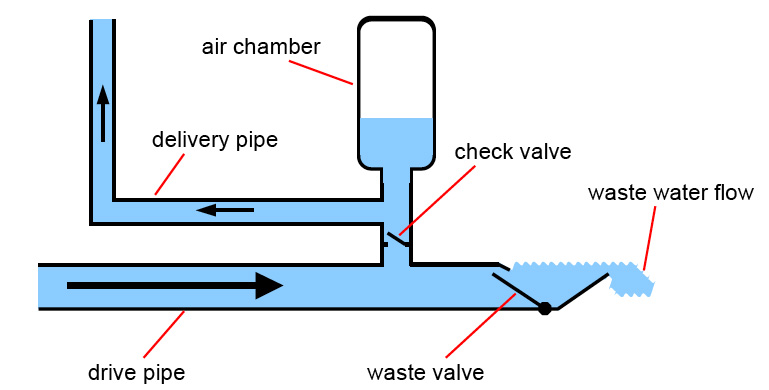Difference between revisions of "Hydraulic Ram pump"
From Akvopedia
| Line 4: | Line 4: | ||
[[Image:PrincipleHydraulicRam.jpg|thumb|right|150px|Principle of a Hydraulic Ram pump. ]] | [[Image:PrincipleHydraulicRam.jpg|thumb|right|150px|Principle of a Hydraulic Ram pump. ]] | ||
| + | |||
| + | [[Image:HydraulicRamChildren.jpg|thumb|right|150px|Children standing around a Hydraulic Ram pump produced by AIDF, Phillippines ]] | ||
| Line 15: | Line 17: | ||
|- | |- | ||
| valign="top" | Uses renewable energy sources.<br> | | valign="top" | Uses renewable energy sources.<br> | ||
| − | + | If properly designed, can be locally produced and maintained<br> | |
| − | | valign="top" | | + | Very effective in mounaneous areas<br> |
| + | | valign="top" |Water with height difference is needed | ||
|} | |} | ||
Revision as of 13:50, 24 August 2008
In areas where natural flows exist, Hydraulic Ram pumps (ram pumps) can be used to transport water to higher grounds without using electricity or fuel, by using the energy in the speed of the flow to pump a portion of the water up to a much higher level.
Hydraulic Ram pumps
| Advantages | Disadvantages |
|---|---|
| Uses renewable energy sources. If properly designed, can be locally produced and maintained |
Water with height difference is needed |
Capacity
Costs
Additional opportunities
Movie
- Ram pump [1]



